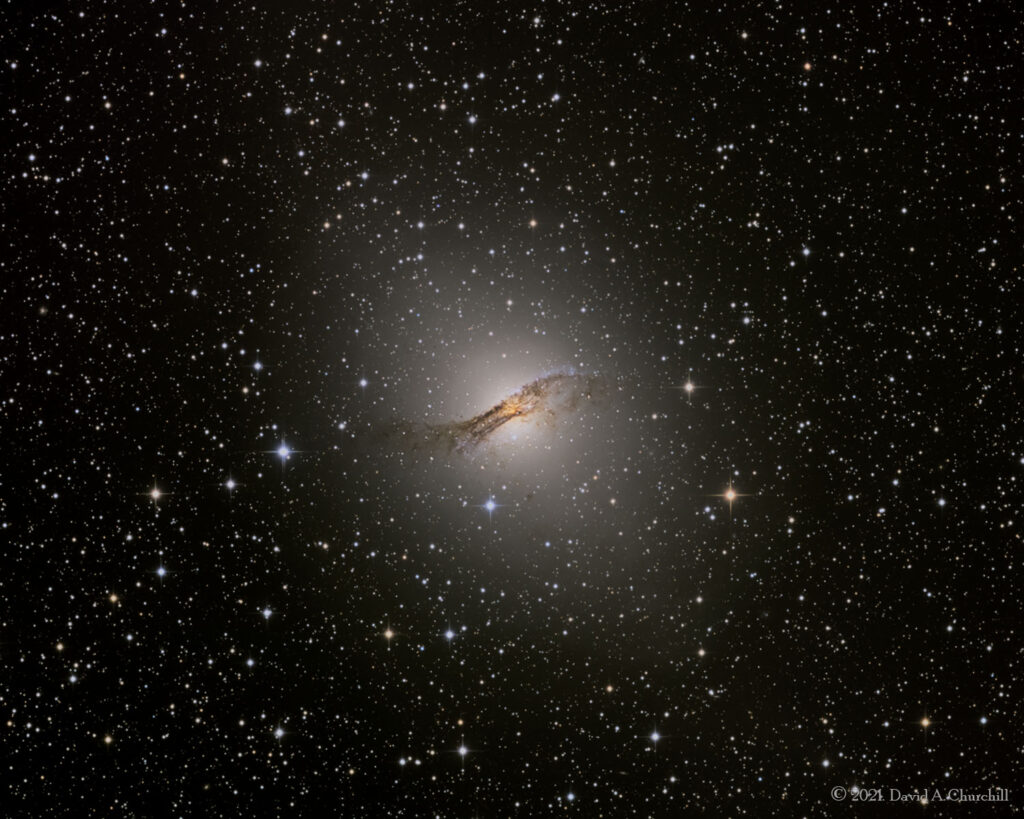NGC 5128 (Caldwell 77)
Centaurus-A. Galaxy, Centaurus
- Description
- Technical
- Links
Centaurus A (also known as NGC 5128 or Caldwell 77) is a galaxy in the constellation of Centaurus. It was discovered in 1826 by Scottish astronomer James Dunlop from his home in Parramatta, in New South Wales, Australia. There is considerable debate in the literature regarding the galaxy’s fundamental properties such as its Hubble type (lenticular galaxy or a giant elliptical galaxy) and distance (10–16 million light-years). NGC 5128 is one of the closest radio galaxies to Earth, so its active galactic nucleus has been extensively studied by professional astronomers. The galaxy is also the fifth-brightest in the sky, making it an ideal amateur astronomy target, although the galaxy is only visible from low northern latitudes and the southern hemisphere.
The center of the galaxy contains a supermassive black hole with a mass of 55 million solar masses, which ejects a relativistic jet that is responsible for emissions in the X-ray and radio wavelengths. By taking radio observations of the jet separated by a decade, astronomers have determined that the inner parts of the jet are moving at about half of the speed of light. X-rays are produced farther out as the jet collides with surrounding gases, resulting in the creation of highly energetic particles. The X-ray jets of Centaurus A are thousands of light-years long, while the radio jets are over a million light-years long.
Like other starburst galaxies, a collision is suspected to be responsible for the intense burst of star formation. Models have suggested that Centaurus A was a large elliptical galaxy that collided and merged with a smaller spiral galaxy.
The galaxy Centaurus A has for years been under particular interest by astronomers for being a possible merger of an elliptical galaxy, and a spiral galaxy. While spiral galaxies colliding with spiral galaxies is relatively common, the affects of an elliptical and a spiral collision are not fully known.
Telescope: Planewave CDK17 (FR) f4.5
Mount: Astro Physics 1600GTO
Camera: QHY16200A/ Integral FW
Guider: Agena Starguide II / SBIG STi
L: 48×10 mins = 480 mins, R: 24×10 mins = 240 mins, G: 24×10 mins = 240 mins, B: 24×10 mins = 240 mins
Total Imaging Time: 20h 00m
Data Imaged remotely over 6 nights during March 2021.
Imaged from Observatorio El Sauce, Chile, in partnership with Fred Espenak.
Data acquisition & Processing by David Churchill.
None

